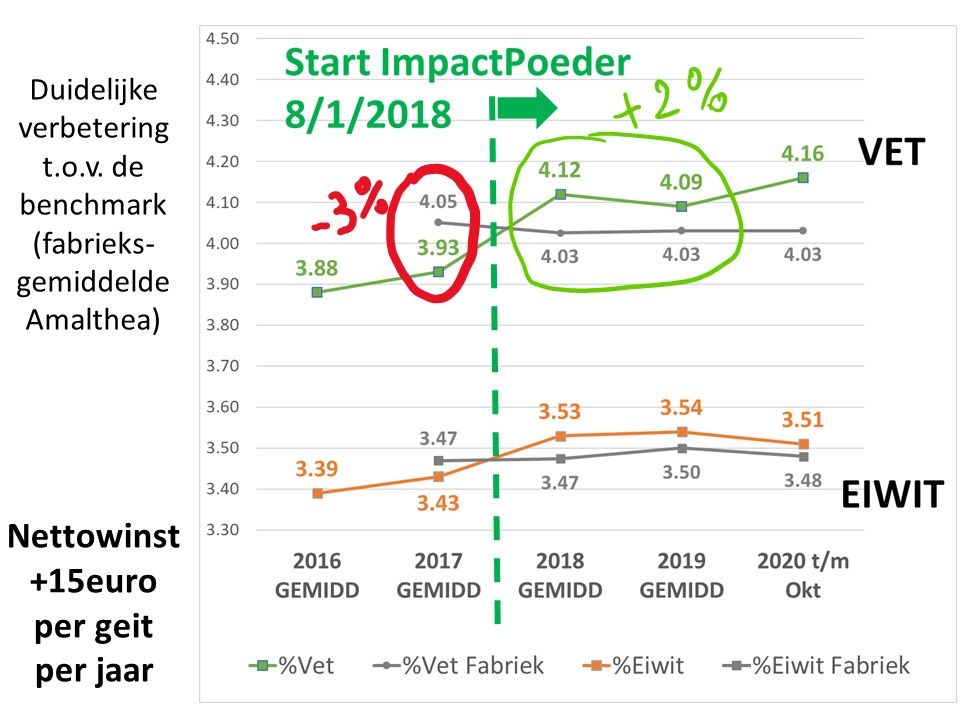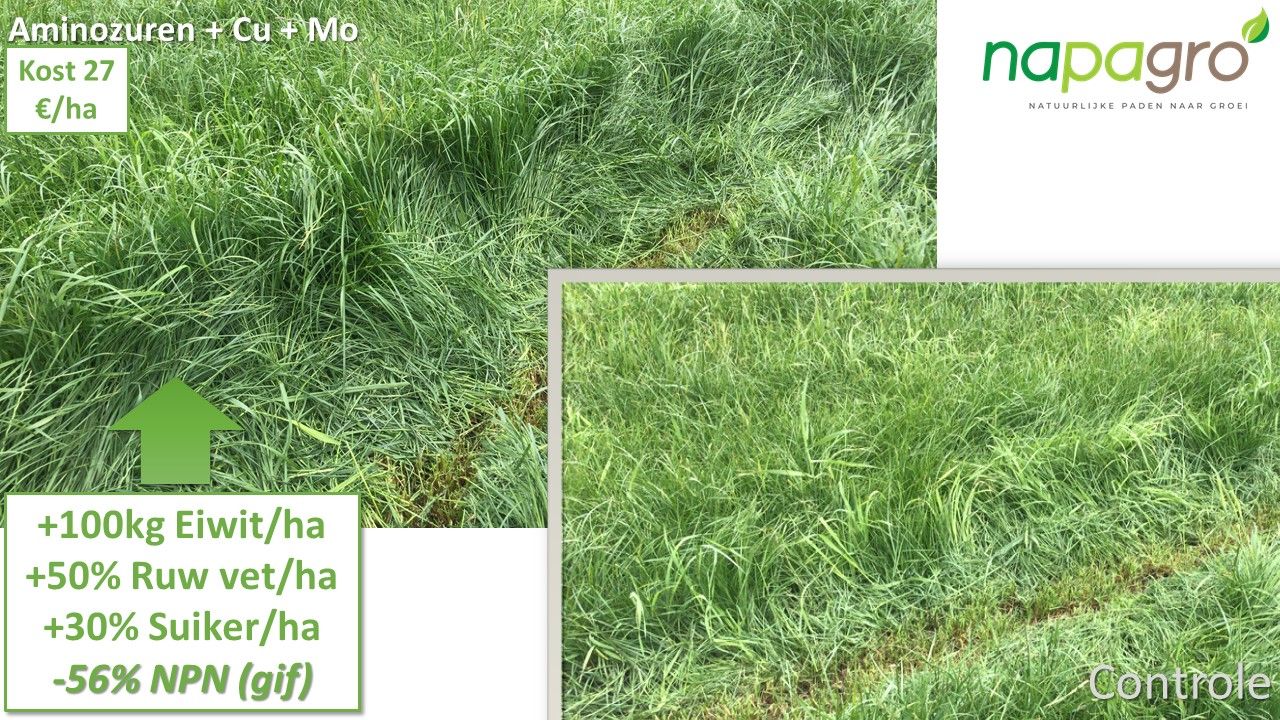Dairy cattle
ruminants play an important role in regenerative agriculture
We like to look at the big picture : the relationship between manure quality, soil life, feed quality and animal health.
Our approach is based on the following pillars, which are interconnected:
- Kinsey-Albrecht soil analysis for correct liming and replenishment of trace elements. This is important to be able to reduce fertilizer, to provide soil life with the right home (air / water) and to increase the protein quality.
- Improve slurry: keep poison out of the pit, feed it to a low urea, keep the pH of the slurry as close to 7 as possible, no lime, ... and of course revitalize slurry.
- Fertilizer reduction: KAS we are happy to switch to a slow urea fertilizer with C chain and without nitrification inhibitor, we are looking for quality, rather low OEB than sky-high protein levels.
- Stimulate soil life: compost, soil stimulators, spread fertilization, compost tea, seed coating with mycorrhizal mixes, stone meal, ...
- Impact powder in the ration can in certain cases give a significant improvement. It captures mycotoxins, viruses and bacteria, heals wounds, buffers a bit and provides better resistance. We often see mortellaro and other problems fade away. The manure has a lower pH, a higher% organically bound N, has fewer emissions and demonstrably works better on the land. Incidentally, impact powder works excellently for piglets, at an additional cost of a few euros per ton of feed.
- Seacrop zeemineralen zijn zeer goed opneembaar en laten meestal snel effect zien qua vachtglans, alertheid, bronstigheid, gehaltes en algemene conditie.

- Vitalized drinking water for animals and humans: take the test with our plate and judge for yourself.
- Photosynthesis tuning: Brix measurement and leaf sap analysis can be used to detect defects in the plant. A leaf juice analysis is more accurate than a soil sample. The correct adjustment can sometimes have significant effects in terms of growth and content. The great thing about this system is that better photosynthesis not only produces more and better feed, but also ensures more humus build-up. The effect thus extends beyond one cut.

Recycling Research VBBM - Peter Vanhoof
In opdracht van de VBBM (Vereniging voor Behoud van Boer en Milieu) onderzocht Peter Vanhoof de stikstofbenutting in grasteelt bij verschillende doseringen van drijfmest, en vergeleek tegelijk injecties vs bovengrondse toepassing.
Duidelijk blijkt dat een lagere dosis drijfmest, bovengronds aangewend, een beter bodemleven geeft én een hogere stiksrofbenutting (meer eiwit uit de drijfmest terug te vinden in de kuilanalyses).
verder komen nog een aantal goede/slechte praktijken aan bod / over kalk en pH in de put, over molybdeengehalte en N-omzetting.
Napagro is erg tevreden dat we dit onderzoek mee mochten sponsoren.
Graag presenteren we deze studie samen met andere onderzoeken op een studiemiddag van melkveehouders.
Stuur een bericht naar info@napagro.eu als u het volledige onderzoeksrapport graag per mail ontvangt.
Lower costs due to a healthy biology
The regenerative approach by fellow combatant Peter Vanhoof in a beautiful video. It is impossible to seperate soil life from the other practices on the farm.
It is also increasingly difficult to run a profitable farm on soils without highly developed life. That is why the integrated approach is more succesfull; soil analyses, fertilization, plant nutrition, soil cultivation, rotation, green manure, roughage, vitalization, ... it depends on each other. And that does not only apply to a dairy farm.
Het draait om de boer!
Deze reportage laat zien hoe een groepje boeren uit de regio Lunteren zelf het regeneratieve/natuur-inclusieve heft in handen nemen. Ze experimenteren volop met drijfmestverbetering, compostthee, gesteentemeel, kruidenrijk grasland, vetzuuranalyse, kruiden in het rantsoen ... om krachtvoer en kunstmest inputs tot een minimum te herleiden.
Hun bodem en koe-gezondheid gaan met sprongen vooruit. Ook bij de deelnemers die 11 000 liter melken.